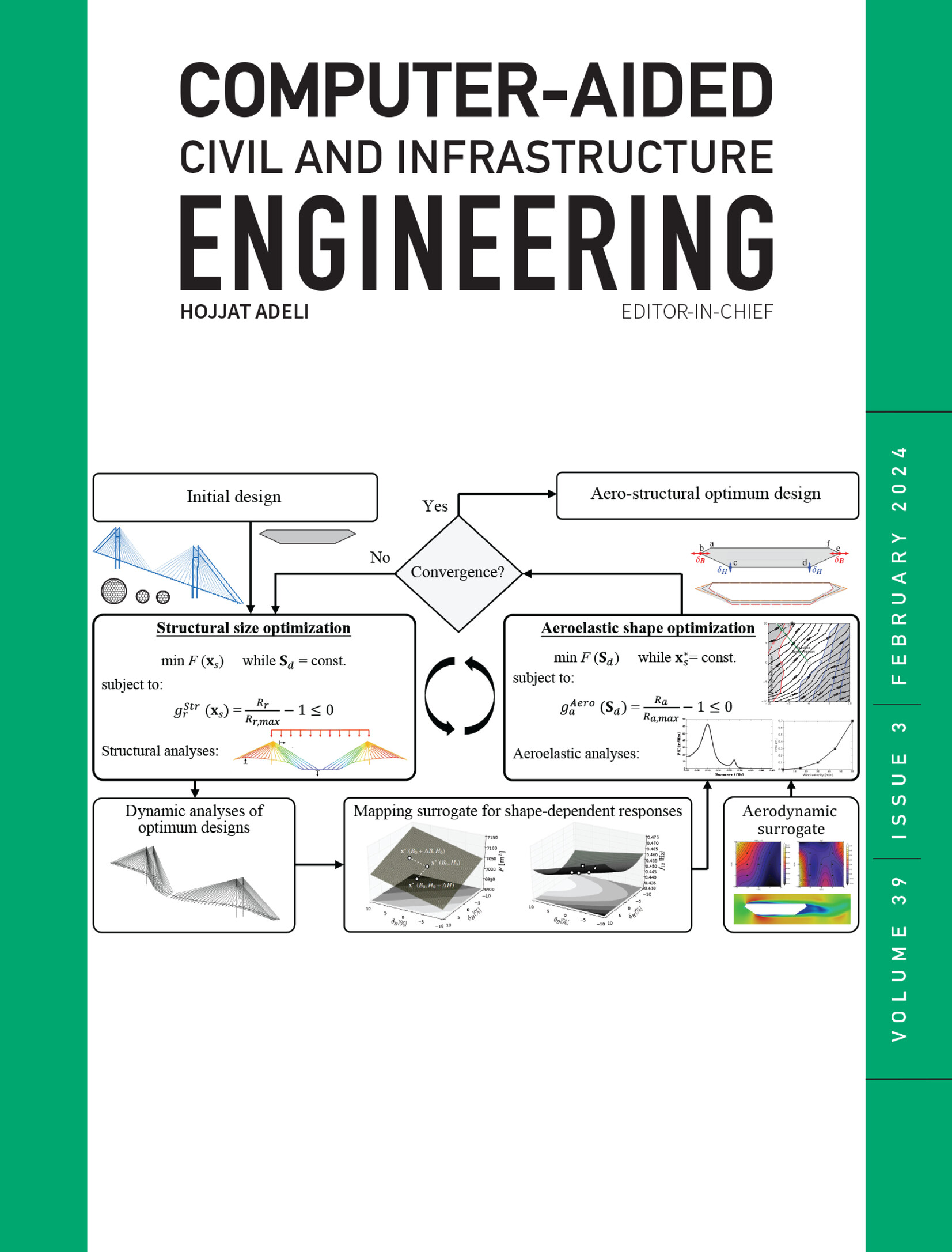基于条件扩散模型和领域自适应特征选择的无监督路面异常检测
IF 9.1
1区 工程技术
Q1 COMPUTER SCIENCE, INTERDISCIPLINARY APPLICATIONS
引用次数: 0
摘要
路面缺陷对道路安全和基础设施寿命构成严重威胁。遵循完全监督的方式,许多现有的检测方法严重依赖于大量的标记数据。本文基于真实世界路面图像的多样性和不平衡性,提出了一种基于重建的无监督路面异常检测框架。它利用条件引导模糊扩散模型来重建无缺陷的异常图像,结合域自适应特征细化和缺陷感知特征选择模块进行鲁棒异常评分。通过在条件引导框架中集成单纯形噪声,我们的方法有效地保留了正常的路面纹理,同时消除了缺陷,无需依赖像素级注释即可实现精确定位。在Pavementscape数据集上进行的大量对比和消融实验表明,我们的方法优于其他无监督异常检测技术,并且与完全监督分割方法仍然具有竞争力。这些结果强调了我们的无监督、扩散驱动管道在解决大规模路面检查中昂贵的标注瓶颈方面的潜力,为现实世界的道路维护提供了可扩展和高度精确的解决方案。本文章由计算机程序翻译,如有差异,请以英文原文为准。
Unsupervised pavement anomaly detection via conditional diffusion model and domain adaptive feature selection
Pavement defects pose serious threats to road safety and infrastructure longevity. Following a full‐supervised manner, many existing detection methods rely heavily on extensive labeled data. In this paper, motivated by the inherent diversity and imbalance of real‐world pavement images, we propose a reconstruction‐based unsupervised pavement anomaly detection framework. It leverages a conditional guided blurring diffusion model to reconstruct abnormal images as defect‐free, combined with domain‐adaptive feature refinement and a defect‐aware feature selection module for robust anomaly scoring. By integrating simplex noise within the conditional guiding framework, our approach effectively preserves normal pavement textures while removing defects, enabling precise localization without relying on pixel‐level annotations. Extensive comparison and ablation experiments on the Pavementscape dataset demonstrate that our method outperforms other unsupervised anomaly detection techniques and remains competitive with fully supervised segmentation approaches. These results underscore the potential of our unsupervised, diffusion‐driven pipeline to address the costly annotation bottleneck in large‐scale pavement inspection, offering a scalable and highly accurate solution for real‐world road maintenance.
求助全文
通过发布文献求助,成功后即可免费获取论文全文。
去求助
来源期刊
CiteScore
17.60
自引率
19.80%
发文量
146
审稿时长
1 months
期刊介绍:
Computer-Aided Civil and Infrastructure Engineering stands as a scholarly, peer-reviewed archival journal, serving as a vital link between advancements in computer technology and civil and infrastructure engineering. The journal serves as a distinctive platform for the publication of original articles, spotlighting novel computational techniques and inventive applications of computers. Specifically, it concentrates on recent progress in computer and information technologies, fostering the development and application of emerging computing paradigms.
Encompassing a broad scope, the journal addresses bridge, construction, environmental, highway, geotechnical, structural, transportation, and water resources engineering. It extends its reach to the management of infrastructure systems, covering domains such as highways, bridges, pavements, airports, and utilities. The journal delves into areas like artificial intelligence, cognitive modeling, concurrent engineering, database management, distributed computing, evolutionary computing, fuzzy logic, genetic algorithms, geometric modeling, internet-based technologies, knowledge discovery and engineering, machine learning, mobile computing, multimedia technologies, networking, neural network computing, optimization and search, parallel processing, robotics, smart structures, software engineering, virtual reality, and visualization techniques.

 求助内容:
求助内容: 应助结果提醒方式:
应助结果提醒方式:


